Artist: Nano Reid RHA (1905-1981) Title: Tinkers in the Hills Signature: signed 'NANO REID' lower right Medium: oil on board Size: 51½ x 61cm (20.3 x 24in) Framed Size: 72 x 62cm (28.3 x 24.4in) Provenance: Dawson Gallery, Dublin (label verso); Collection of William P. Mahoney Esq.; Adam's, Dublin, 5th December 2006 lot 107; Private Collection a#morebtn { color: #de1d01; } a#morebtn:hover { cursor: pointer;} A composition characterised by a strong contrast between lighter and darker passages of paint, at first glance Tinkers in the Hills is an almost entirely abstract work of art. However closer examination reveals that the area of darker paint on the left contains the outlines of a family group, includ... Read more Nano Reid Lot 19 - 'Tinkers in the Hills' Estimate: €5,000 - €7,000 A composition characterised by a strong contrast between lighter and darker passages of paint, at first glance Tinkers in the Hills is an almost entirely abstract work of art. However closer examination reveals that the area of darker paint on the left contains the outlines of a family group, including a woman holding a child, seated beside a cooking stove. Above and behind this group is an area, rapidly painted with white over greys and ochres, suggestive perhaps of resting animals. On the right, outlines of caravans and other features of the travellers' campsite can be discerned, but these are not the key elements in the painting, which is primarily an essay in painterly abstraction. Colour harmonies of pink, ochre, brown and grey are employed by Reid with skill, particularly in the lower right section. She often used a limited colour range in this way, tending towards browns, greens and ochres, but applying the paint with spontaneity; the outlines of the figures are subsidiary to an expressive mark-making used by the artist to evoke the abundance of life and energy in the landscape. Although her approach to art was progressive, Reid's subject matter was almost always conventional. She liked to paint still-lives, interiors, landscapes and genre scenes, as well as portraits and depictions of birds and other animals. The recurring motifs in her art, of glasses, bottles on tables, pub interiors, rain-sodden landscapes and gypsy encampments, are presented with a lack of pretentiousness that is honest and appealing. Ultimately, what makes Reid's art appealing, even to those who prefer traditional art, is the strong vein of poetic feeling that infuses her work. Born in Drogheda in 1900, Anne Margaret ('Nano') Reid attended school at the local Sienna Convent, before winning, in 1920, a scholarship to the Metropolitan School of Art in Dublin, where she studied under Sean Keating and Harry Clarke Reid then went to Paris, attending Le Grand Chaumiere, along with Kathleen Fox before moving on to London, where she studied under Bernard Meninsky at the Central School (now St. Martins). She returned home to Drogheda, where she lived for the rest of her life, producing paintings that capture much of the flavour of the Irish landscape and towns. Reid first exhibited at the Royal Hibernian Academy in 1925, and was a regular contributor to the Academy's annual exhibitions. Nine years later she had a one-person show at the Dublin Painters Gallery-the first of several-and showed also at the Dawson and Waddington galleries. In 1941 she joined the White Stage group, and became a member of the progressive IELA, founded two years later. In 1946, along with Frances Kelly, she painted murals in the Four Seasons building in Dublin, depicting the history of the trades union movement. Four years later, along with Norah McGuinness she represented Ireland at the Venice Biennale. Reid was a socially committed artist, with strong views on the church and the influence of commerce on life in Ireland. Her painting The Bottling Store, shown at the Dawson Galle
Artist: Nano Reid RHA (1905-1981) Title: Tinkers in the Hills Signature: signed 'NANO REID' lower right Medium: oil on board Size: 51½ x 61cm (20.3 x 24in) Framed Size: 72 x 62cm (28.3 x 24.4in) Provenance: Dawson Gallery, Dublin (label verso); Collection of William P. Mahoney Esq.; Adam's, Dublin, 5th December 2006 lot 107; Private Collection a#morebtn { color: #de1d01; } a#morebtn:hover { cursor: pointer;} A composition characterised by a strong contrast between lighter and darker passages of paint, at first glance Tinkers in the Hills is an almost entirely abstract work of art. However closer examination reveals that the area of darker paint on the left contains the outlines of a family group, includ... Read more Nano Reid Lot 19 - 'Tinkers in the Hills' Estimate: €5,000 - €7,000 A composition characterised by a strong contrast between lighter and darker passages of paint, at first glance Tinkers in the Hills is an almost entirely abstract work of art. However closer examination reveals that the area of darker paint on the left contains the outlines of a family group, including a woman holding a child, seated beside a cooking stove. Above and behind this group is an area, rapidly painted with white over greys and ochres, suggestive perhaps of resting animals. On the right, outlines of caravans and other features of the travellers' campsite can be discerned, but these are not the key elements in the painting, which is primarily an essay in painterly abstraction. Colour harmonies of pink, ochre, brown and grey are employed by Reid with skill, particularly in the lower right section. She often used a limited colour range in this way, tending towards browns, greens and ochres, but applying the paint with spontaneity; the outlines of the figures are subsidiary to an expressive mark-making used by the artist to evoke the abundance of life and energy in the landscape. Although her approach to art was progressive, Reid's subject matter was almost always conventional. She liked to paint still-lives, interiors, landscapes and genre scenes, as well as portraits and depictions of birds and other animals. The recurring motifs in her art, of glasses, bottles on tables, pub interiors, rain-sodden landscapes and gypsy encampments, are presented with a lack of pretentiousness that is honest and appealing. Ultimately, what makes Reid's art appealing, even to those who prefer traditional art, is the strong vein of poetic feeling that infuses her work. Born in Drogheda in 1900, Anne Margaret ('Nano') Reid attended school at the local Sienna Convent, before winning, in 1920, a scholarship to the Metropolitan School of Art in Dublin, where she studied under Sean Keating and Harry Clarke Reid then went to Paris, attending Le Grand Chaumiere, along with Kathleen Fox before moving on to London, where she studied under Bernard Meninsky at the Central School (now St. Martins). She returned home to Drogheda, where she lived for the rest of her life, producing paintings that capture much of the flavour of the Irish landscape and towns. Reid first exhibited at the Royal Hibernian Academy in 1925, and was a regular contributor to the Academy's annual exhibitions. Nine years later she had a one-person show at the Dublin Painters Gallery-the first of several-and showed also at the Dawson and Waddington galleries. In 1941 she joined the White Stage group, and became a member of the progressive IELA, founded two years later. In 1946, along with Frances Kelly, she painted murals in the Four Seasons building in Dublin, depicting the history of the trades union movement. Four years later, along with Norah McGuinness she represented Ireland at the Venice Biennale. Reid was a socially committed artist, with strong views on the church and the influence of commerce on life in Ireland. Her painting The Bottling Store, shown at the Dawson Galle
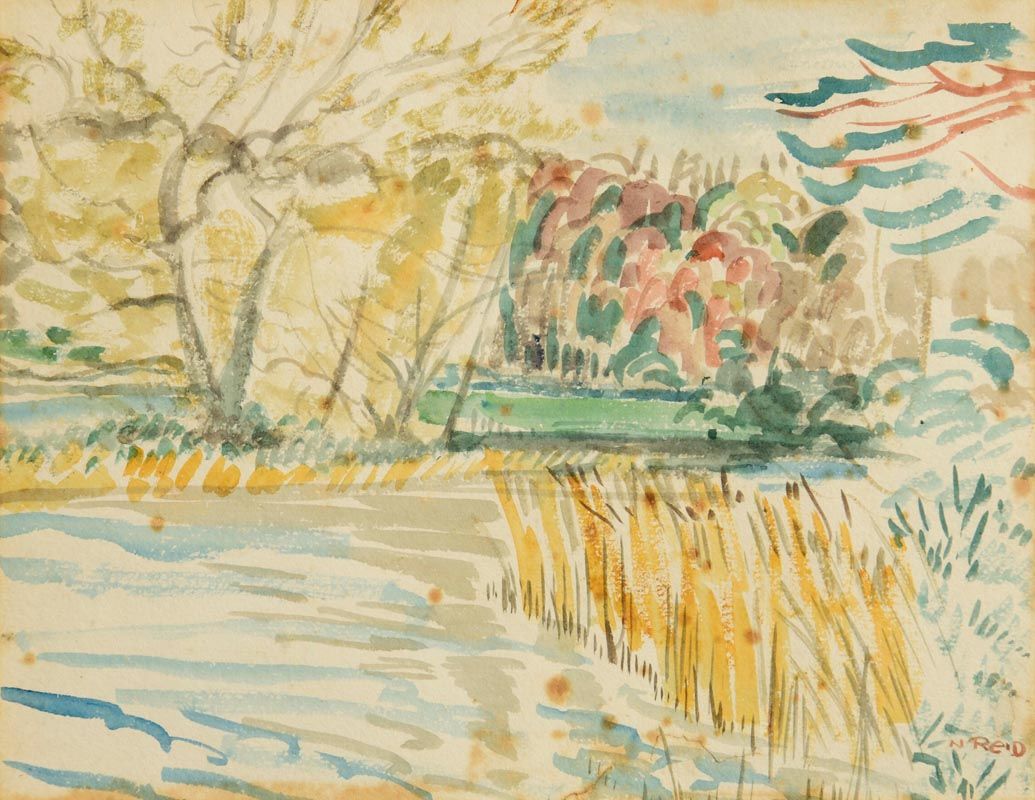

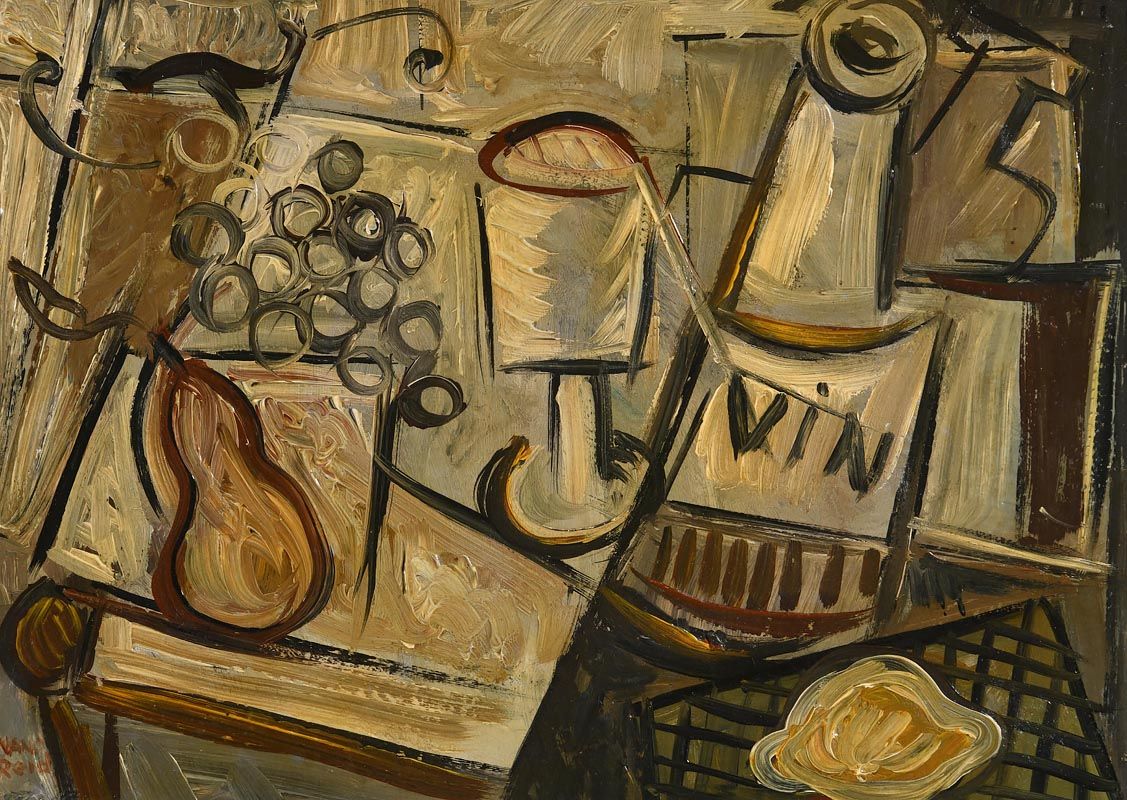
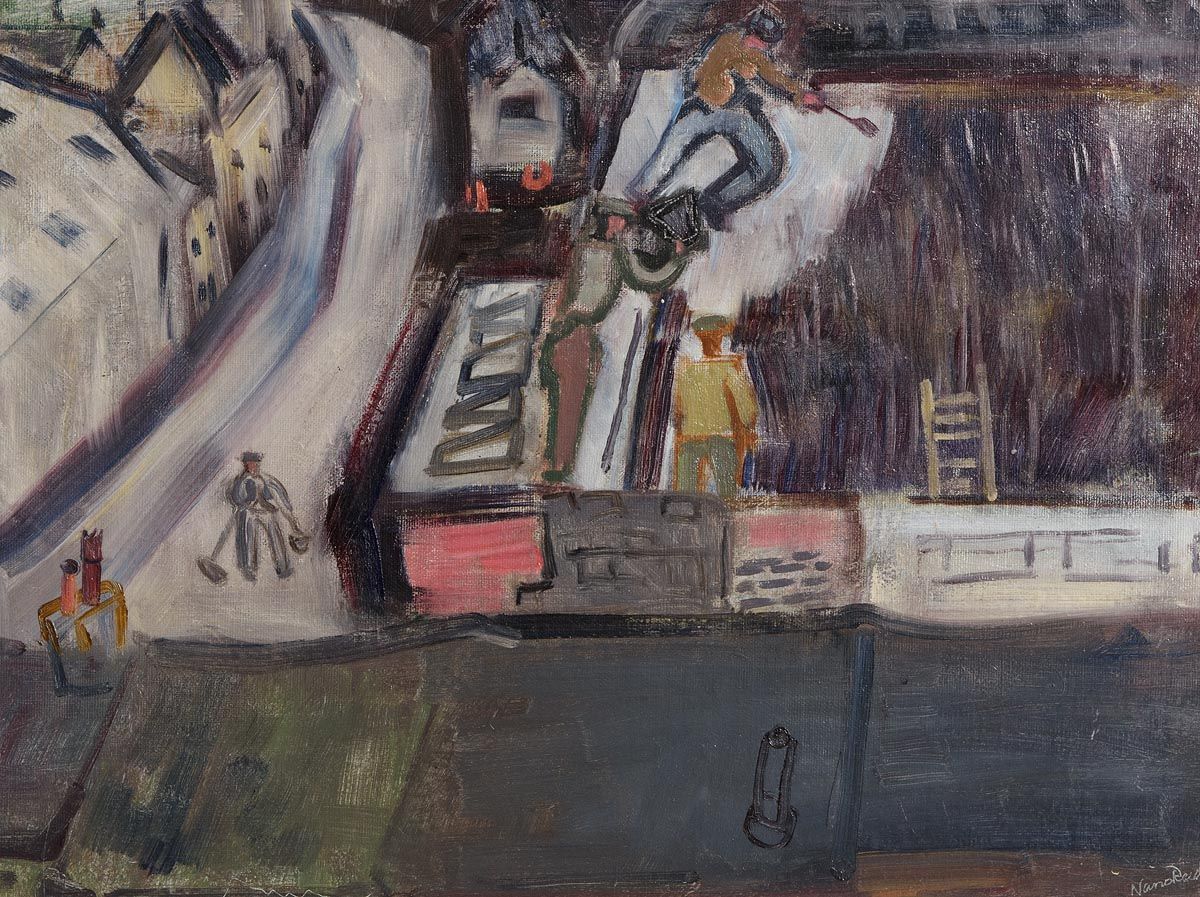
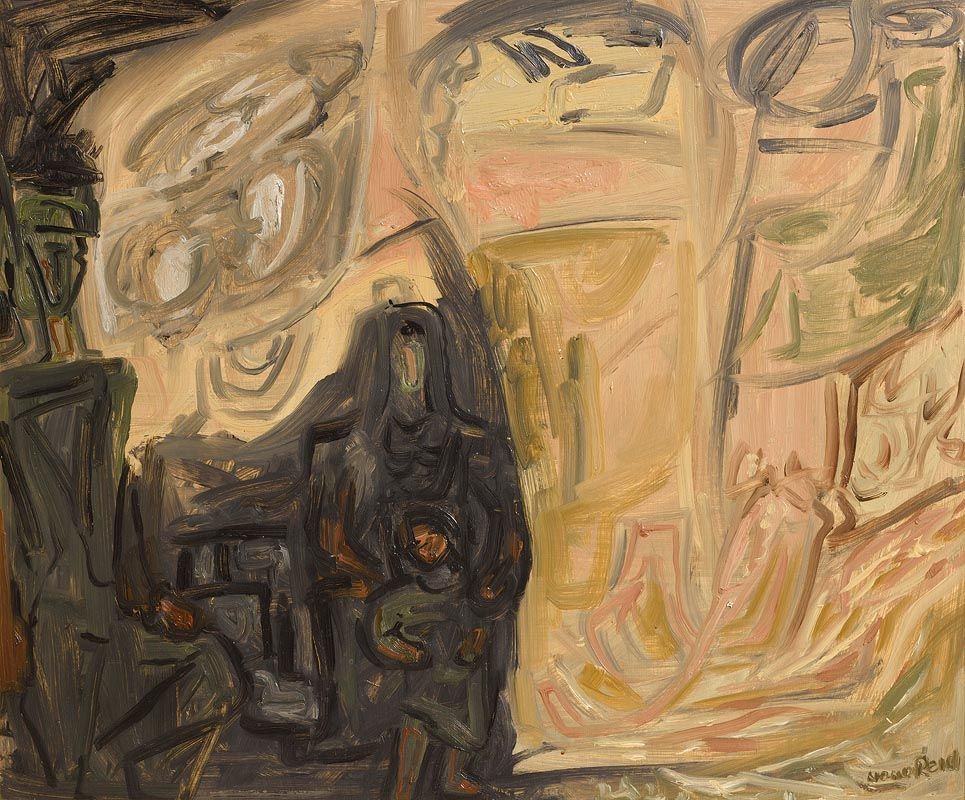
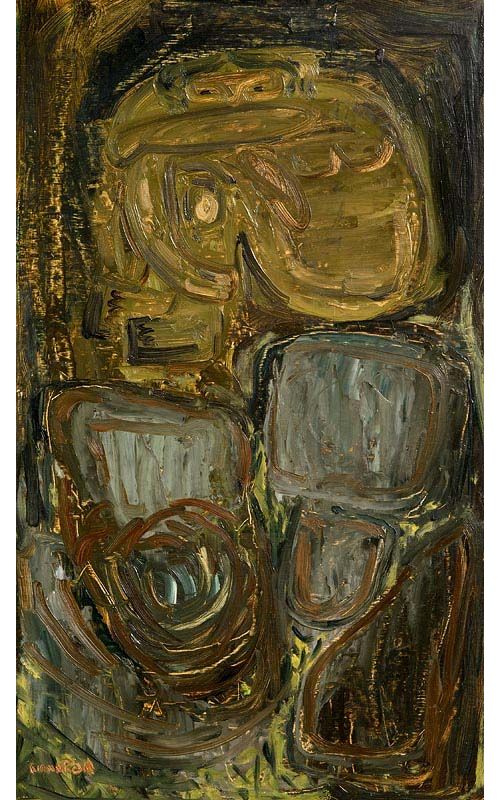
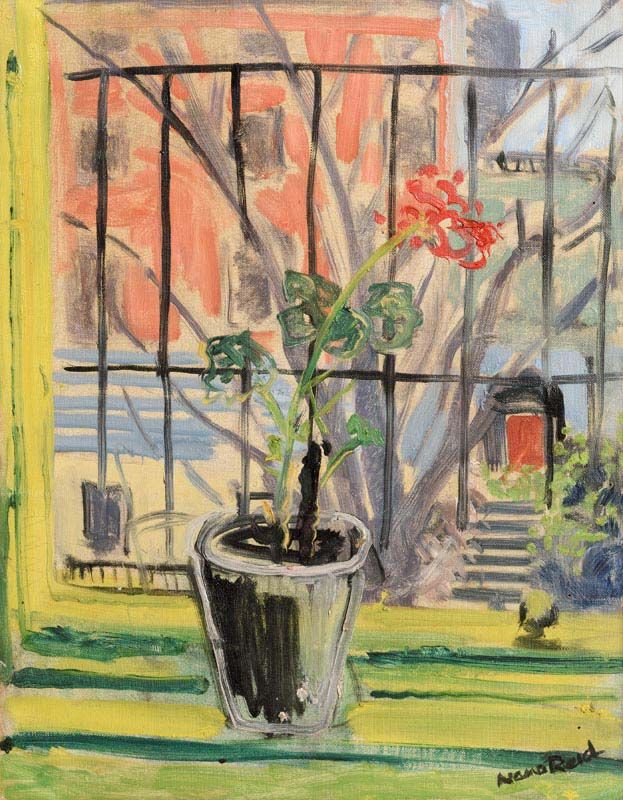
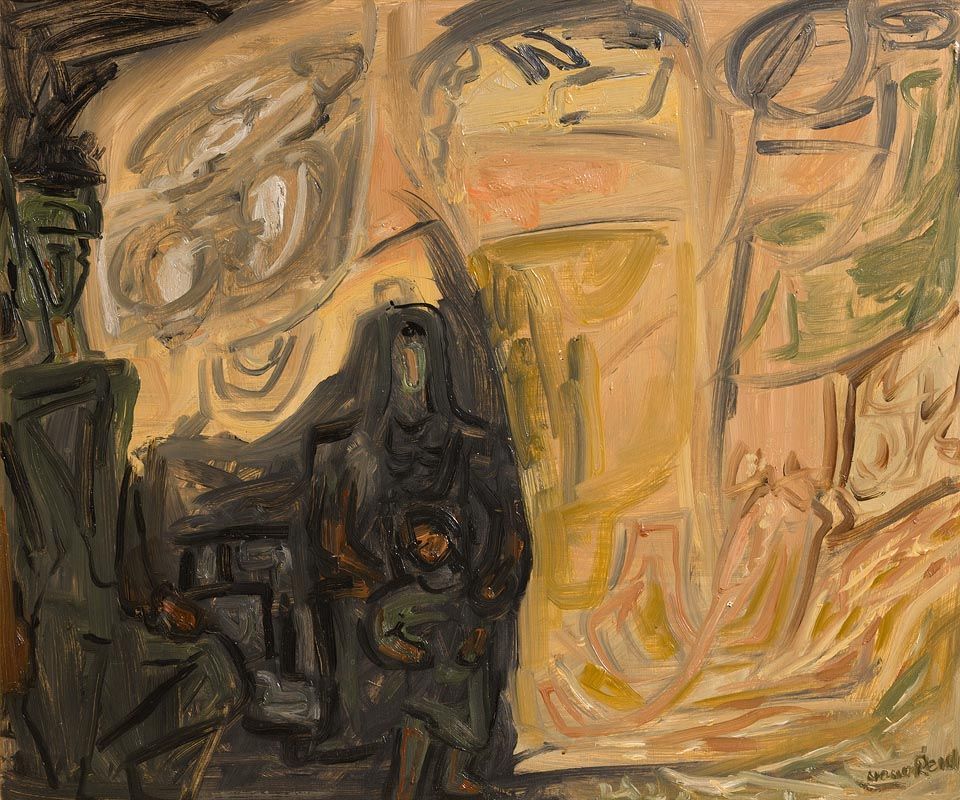
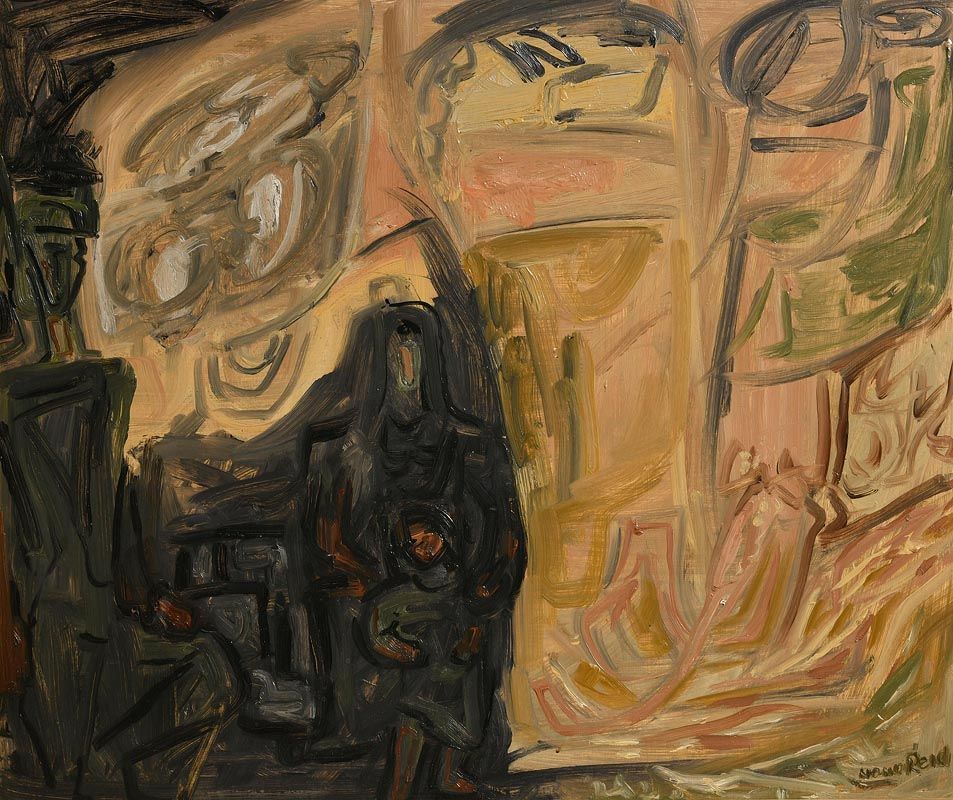

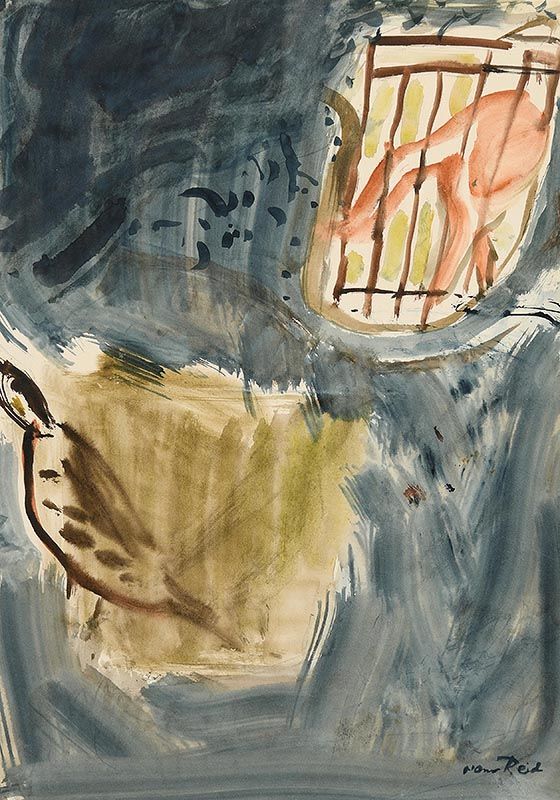
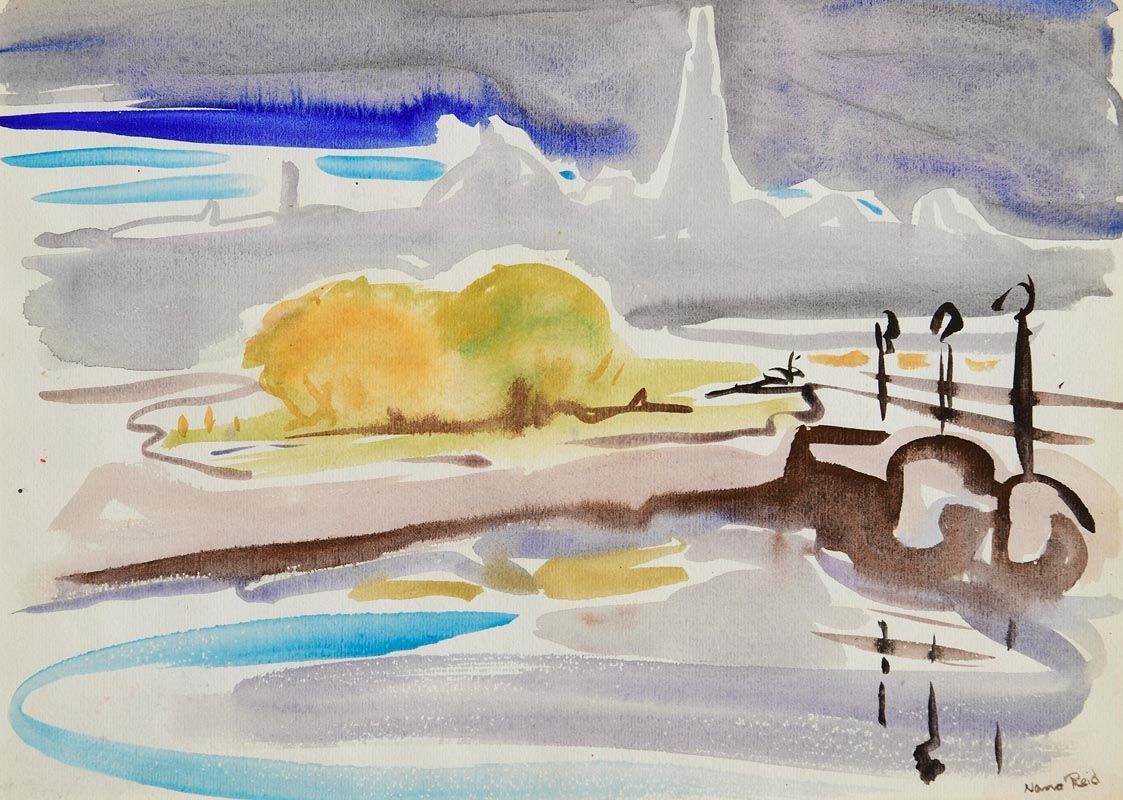
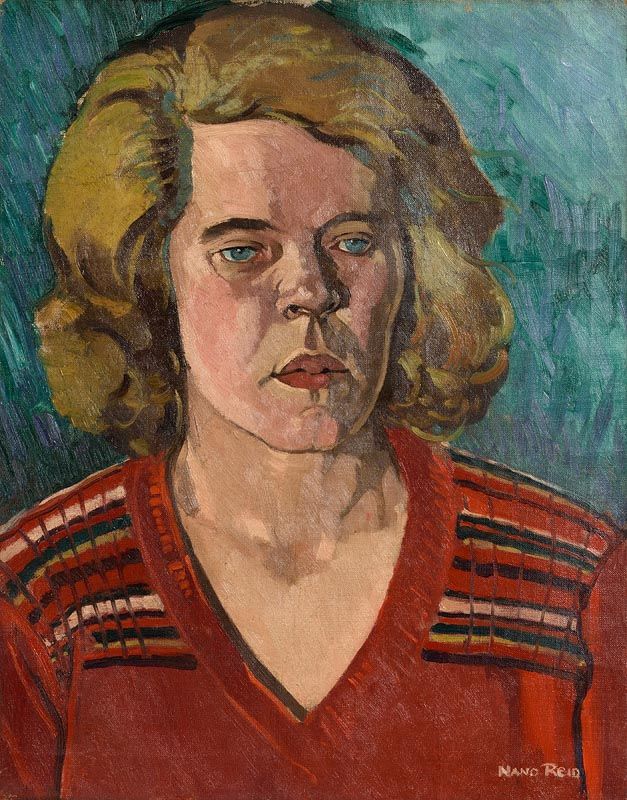
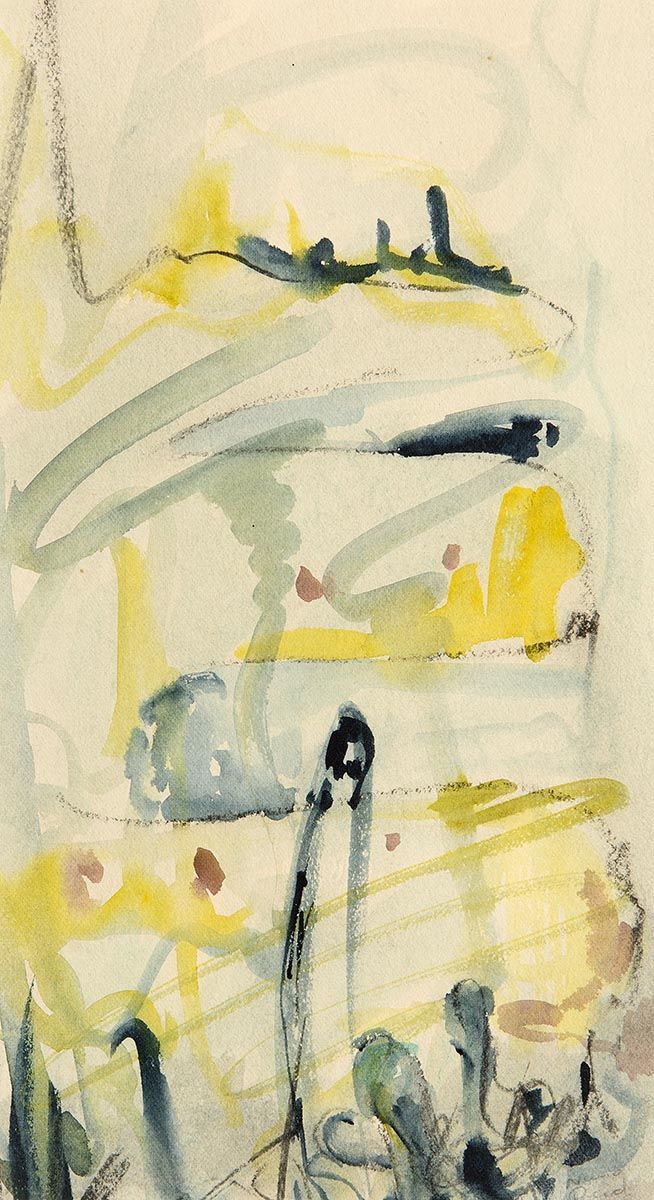
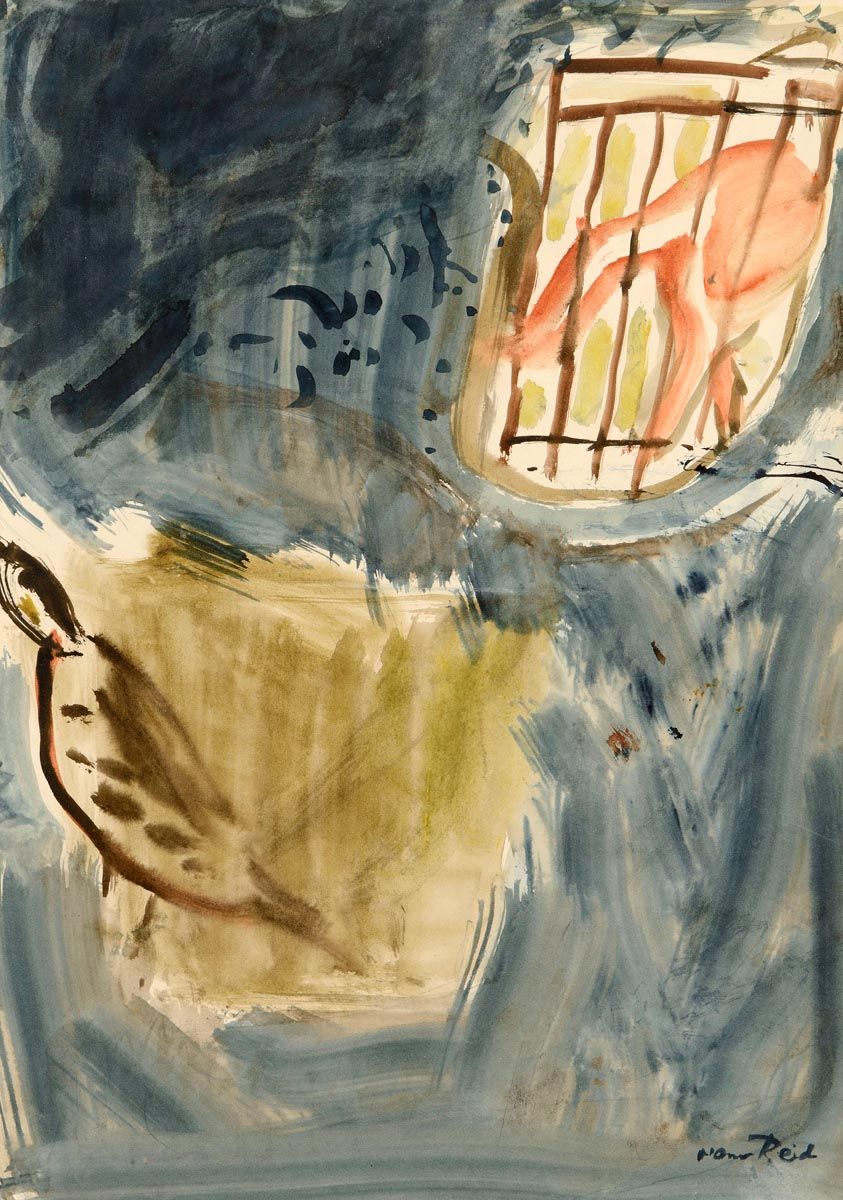
Try LotSearch and its premium features for 7 days - without any costs!
Be notified automatically about new items in upcoming auctions.
Create an alert